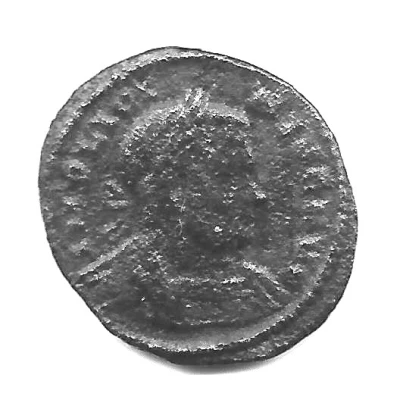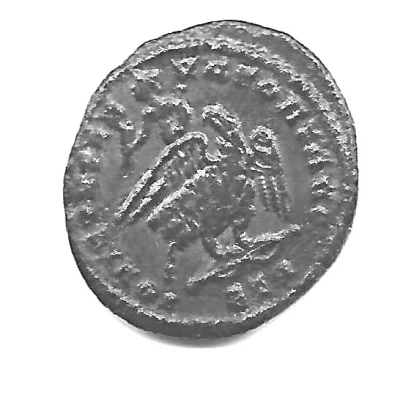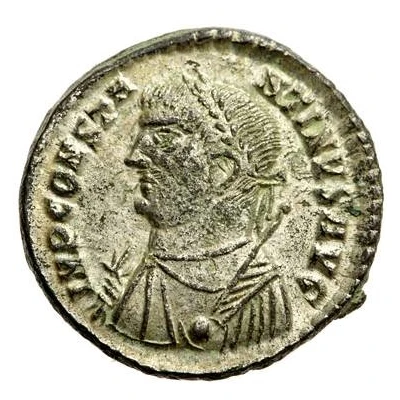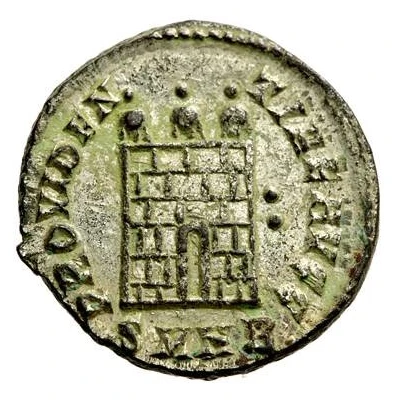Nummus - Crispus as Caesar VOT V MVLT X; Thessalonica
| Bronze | 2.8 g | 18.5 mm |
| Issuer | Rome › Roman Empire (27 BC - 395 AD) |
|---|---|
| Caesar | Crispus (317-324) |
| Type | Standard circulation coin |
| Years | 318-319 |
| Value | Nummus (1⁄7200) |
| Currency | Solidus, Reform of Constantine (AD 310/324 – 395) |
| Composition | Bronze |
| Weight | 2.8 g |
| Diameter | 18.5 mm |
| Shape | Round (irregular) |
| Technique | Hammered |
| Orientation | Variable alignment ↺ |
| Demonetized | Yes |
| Updated | 2024-10-05 |
| Numista | N#410342 |
|---|---|
| Rarity index | 100% |
Reverse
Inscription within laurel wreath.
Mintmark between two dots and officina followed by a dot in exergue.
Script: Latin
Lettering:
VOT •V•
MVLT •X•
CAESS
Unabridged legend: Votis Quinquennalibus Multis Decennalibus duorum caesarum.
Translation: Vows (prayers) on the fifth anniversary [of the emperors rule], more for his [hoped for] tenth anniversary of the two Caesars.
Interesting fact
The Nummus - Crispus as Caesar coin was issued during the reign of Emperor Constantine the Great, who ruled the Roman Empire from 306 to 337 AD. This coin was part of a large-scale currency reform that Constantine implemented to stabilize the Roman economy, which had been suffering from inflation and currency devaluation. The Nummus coin was introduced as a new denomination to replace the older bronze coins, and it featured a portrait of Crispus, who was Constantine's eldest son and Caesar (junior emperor). The coin's design and inscriptions reflect the political and religious changes that were taking place in the Roman Empire during this time, including the rise of Christianity and the decline of traditional Roman religions.



